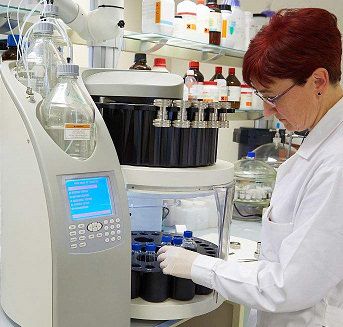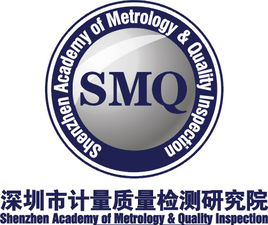【Entry name】:Construction of Food Testing Lab of Shenzhen Metrology Institute
【Project area】:3,800 m2
【Project results】:Completed the planning and construction of lab; passed the acceptance.

Petrochemical industry, referred to as petrochemical industry. Generally refers to the chemical industry using oil and natural gas as raw materials. It has a wide range of products. Crude oil is cracked, reformed and separated to provide basic raw materials such as ethylene, propylene, butene, butadiene, benzene, toluene, xylene, naphthalene, etc. From these basic raw materials, various basic organic materials such as methanol, formaldehyde, ethanol, acetaldehyde, acetic acid, isopropanol, acetone and phenol can be prepared. Analytical and laboratory work in petrochemical plants is one of the important links in the production process. It is not only necessary to analyze the raw materials and auxiliary products, but also necessary to analyze and determine the materials in the intermediate production process in time to ensure the safe and stable production process.
1. Planned area indicators shall be implemented in accordance with the provisions of "Planned area indicators for scientific research and construction projects". The oil chemical laboratory is divided into simplified analysis room and chromatographic analysis room. The area should not be less than 40m and the net height should not be less than 2.80m. When air conditioning is set, the height of window sill should be more than 0.9m and the area ratio of room to window should not be less than 1:6.
2. Relevant storage rooms should be allocated. Storage rooms should be set in the position of backlight ventilation, and not too many windows should be left. It is better to arrange them at a high level. It is advisable that the bottom of the windows should be 2 meters away from the ground. Emergency evacuation should be considered in petrochemical laboratories. The width of laboratory doors should not be less than 1 m and safety doors should be installed. The height of laboratory doors should not be less than 2.10 M. The laboratory corridors should be smooth to prevent the occurrence of channel blockage in emergency situations. The layout schemes of island, peninsula, L-shaped and U-shaped laboratories are often used in the design. The main channel and two central platforms are operated on both sides, with the spacing greater than 1.5m and the one-way distance of side platforms greater than 1.3m.
3. Laboratories should satisfy the requirements of fire prevention, moisture-proof and anti-corrosion with ventilation, purification, disinfection and aseptic functions; the ground should be solid and wear-resistant, waterproof and anti-skid, dust-free, and acid-and alkali-resistant; the wall should be clean, glare-free and dust-free; the laboratory should not suspend the ceiling. Natural lighting should be used and direct sunlight should be avoided as far as possible. Laboratories should consider reserving ventilation pipes and independent sewage pipes. The toxic and harmful gaseous liquids produced in the experiments should be treated and discharged twice to meet the discharge standards.
Brand, size, material, color, etc.

【Entry name】:Construction of Food Testing Lab of Shenzhen Metrology Institute
【Project area】:3,800 m2
【Project results】:Completed the planning and construction of lab; passed the acceptance.

【Entry name】:The Overall Technical Solutions of the Biomedical Testing Center of Shanxi Pharmaceutical Group Co.
【Project area】:13,500 m2
【Project results】:The lab construction drawings have been confirmed; the lab is under construction.

【Entry name】:Lab Construction of Guangdong Institute for Drug Control
【Project area】:4100 m2
【Project results】:Completed lab construction and passed lab acceptance

【Entry name】:BGI (Hunan) Lab Design
【Project area】:6000m2
【Project results】:BGI (Hunan) Lab Design

【Entry name】:The Overall Solutions of STI Lab
【Project area】:7000m2
【Project results】:Completed lab design and furnishing; got CMA\CATL\CNAS certificates.